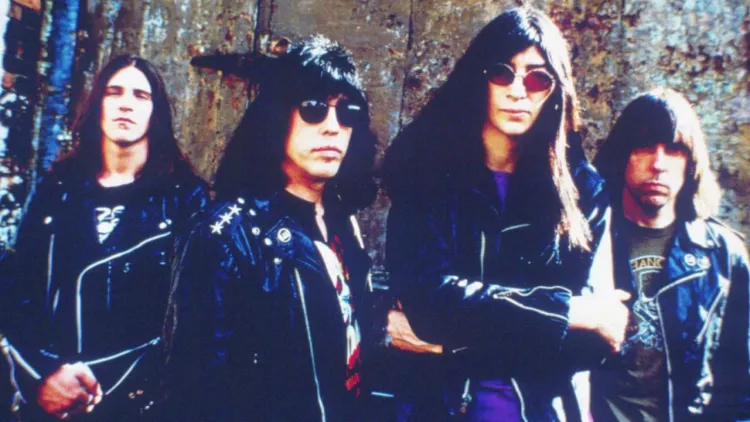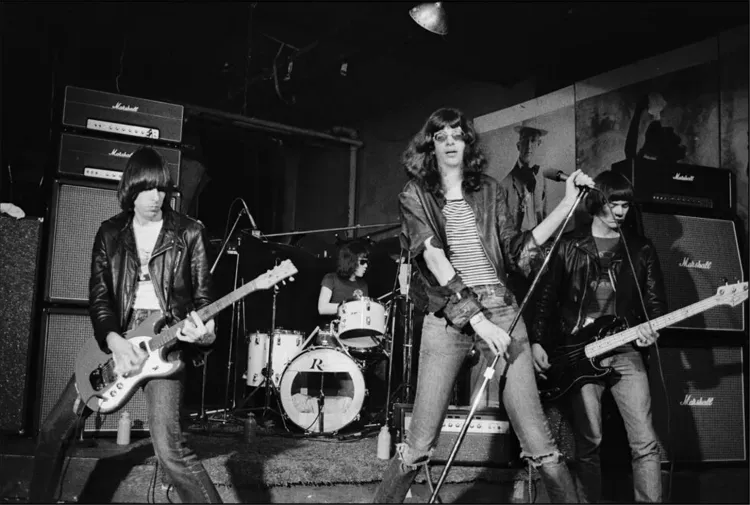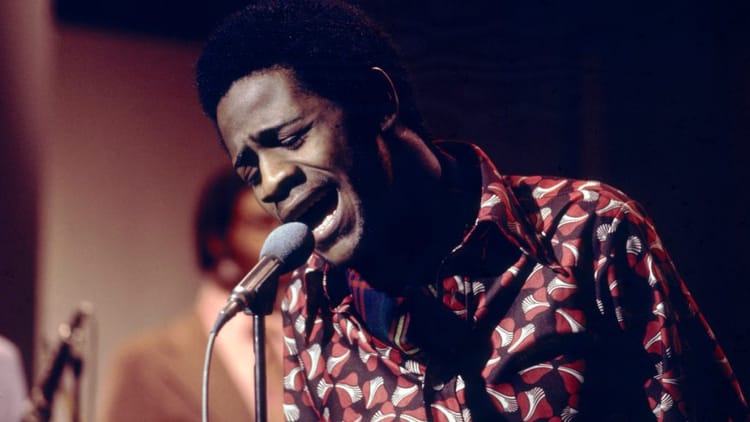Yo La Tengo, pt. 3: Anthony's Album Guide

Part 1 is here. Part 2 is here. My handy dandy profoundly subjective numerical rating scheme is decoded here.
They Shoot, We Score (2008) 6
Fuckbook [Condo Fucks] (2009) 4
Popular Songs (2009) 7
Fade (2013) 8
Parallelogram [Bardo Pond & Yo La Tengo] (2015) 4
Stuff Like That There (2015) 7
Murder In The Second Degree (2016) 7
There’s A Riot Going On (2018) 8
We Have Amnesia Sometimes (2020) 9
Twenty years deep into their recording career, more than a decade with a set line-up of Ira Kaplan, Georgia Hubley and James McNew, Yo La Tengo was locked into a 2LP/1CD every three-to-four years schedule, with film soundtracks and fun little side-projects in between. They Shoot, We Score is a pleasant collection of fragments from four movies, each suite just different enough to keep things fresh, particularly the collaboration with guitarist Smokey Hormel for 2006’s Old Joy. Not often we get to hear Ira trading licks! Fuckbook by Condo Fucks, ostensibly an irreverent trash-rock side project, is docked a point for having such a fantastic name (based on a joke from the hilarious record catalog included with I Can Hear The Heart Beating As One), when the tinnily-recorded 30 minute blurt is considerably duller than their WFMU discs. By track three they’re covering the damn Kinks again! For this they indulged in aliases and pottymouth?
Popular Songs, their fifth double LP in a row (if not sixth, Electr-O-Pura getting the treatment on reissue), cops to the fact that they were basically an indie art-prog band at this point, “Here To Fall” launching the album with dramatic strings and psychedelic ‘70s swagger (Georgia’s cymbal work sure leaves those Maureen Tucker comparisons in the dust). Like Embryonic, the 2009 album by fellow ‘80s-underground-also-rans-turned-aughts-icons Flaming Lips, Songs benefits considerably from a rediscovery of rough edges and dirty sound. It’s still overlong and underwhelming at times (the lovely 9-minute astral meditation “More Stars Than There Are In Heaven” is followed by two songs that are less lovely and even longer), but the band is back to expanding their sound instead of paying tribute to someone else’s.
My kid loves math, band names and animation. You bet he loves the video for "Ohm."
Still sore and cynical about the ‘00s drop-off and bloat, I didn’t really notice the change until I heard “Ohm,” the opening track on their 2013 album Fade. Almost two decades after I found them and a decade after they lost me, I almost couldn’t believe what I was hearing. The trio harmonizing about accepting mortality and futility over an infectious, uplifting groove, Ira showing that whammy bar who’s boss while James and Georgia pass the hook back and forth like a beach ball. It was like a surprise e-mail from an old friend you’d lost touch with, one that doesn’t just remind you of your bond but melts you with their growth. These encyclopedic pop culture nerds who once pondered the fates of hardly working Barnabys and Tom Courtenay had found themselves on the other side of fifty, established, accomplished, and still eager to spread the good word. In its warmth and rejection of insularity, neither hiding their love of noise nor hiding behind it, “Ohm” might be their greatest triumph. Fade was their first album without producer Roger Moutenot since May I Sing With Me (Chicago indie-art-prog kingpin John McEntire taking his spot behind the board), and their shortest since Fakebook as well. It took me a while to hook into the sleepy sweetness that follows “Ohm” - McEntire isn’t one to yell “pop off, muthafuckas!” at a band - but the vibe set by the opener is never undercut by an obnoxious genre exercise, nothing is longer than “Ohm”’s 6:45, and “Before We Run” is their most rewarding finale since “My Little Corner Of The World.” They weren’t back, let alone apologizing for where they’d been. They’d just rediscovered their focus, and it made all the difference.
2015’s Parallelogram is a split-LP with former Matador labelmates Bardo Pond, Philly psychedelic sludge lifers I’d probably dig more if I liked flutes. Bardo takes the A, and Yo La Tengo takes the B, YLT impressively sounding like a band that should take the B on a Three Lobed Recordings split-LP with Bardo Pond. What chameleons! The same year saw a surprise sequel to Fakebook, Stuff Like That There, James McNew using a stand-up double bass, the prodigal Dave Schramm returning, and the band putting together some originals, some remakes and a bunch of covers just like they did in 1990. The outcome has some modest rewards (Ira making a prayer out of a Great Plains song, Schramm’s spotlight turn on “Deeper Into Movies”), but the vibe is considerably drowsier than Fakebook’s. No cover is remotely as giddy as “Emulsified,” and there’s nothing like a song from Have Moicy! or Peter Stampfel guest vocal to give it the proceedings an Unholy Modal boost. The Cure cover could have been recorded for and rejected by Target for lacking the necessary viral pizazz. They may have been gunning to replicate a quiet night with the Everly Brothers or something, but those guys never came off like they were self-consciously afraid of waking the neighbors. (For further 2015 esoTengoca, they back almost half of Bill Wells’ Nursery Rhymes, a collection of, well, nursery rhymes with Knitting Factory-style musical settings).
A second compilation of spontaneous WFMU fundraiser covers, Murder In The Second Degree makes me wonder why the “official” covers albums by these NRBQ fans never have the whimsical bonhomie they’re clearly capable of (you know about their annual Hanukkah concerts, right?). Maybe loose hootenannies are their idea of a great night out, but based on the self-deprecating liners Ira gives the Murder comps, they might not see them as something to save for posterity or promote with a tour. Maybe the right buddies will inspire them to find a middle ground between first takes and perfectionism, giving us a rich and wild jamboree someday.
Yo La Tengo and WFMU host Clay Pigeon doing the Ramones' "Pet Sematary" during the 2018 Hanukkah run. Damn, these shows must be fun.
Though the Sly Stone allusion was an acknowledgement of the madness of the Trump era, 2018’s There’s A Riot Going On isn’t overtly a memento of chaos. Low’s Double Negative, released the same year (that band’s Alan Sparhawk & Mimi Parker being to Duluth in terms of a bohemian romantic rock ideal what Ira & Georgia are to Hoboken - less urbane, more nesting), cathartically captured a shell-shocked stumble down the street to get prescriptions refilled. Riot mostly keeps the anxiety to itself, the band old enough to know that what they can offer their friends and fans is sympathetic reminders and evidence that beauty remains (2004 probably taught them their political outreach is best done on social media). Lord knows they’ve been categorizable as a quiet band for longer than they weren’t, but this self-produced, self-recorded album is far more gentle and ambient than placid or somnambulant (ok, there is one dinky 1:30 instrumental called “Esportes Casual.” They’re still Yo La Tengo). There’s a subtle, engaging alertness here compared to what came before.
Their reaction to COVID was even more oblique. A month into lockdown, the chummiest band in indie rock put a mic in the middle of their rehearsal space, kept an appropriate number of feet apart, and just droned. This wasn’t a formal or experimental exercise. Improvisatory jamming is how a lot of their songs are born. They simply didn’t have it in them to finesse the stuff further. The album contains five fragments, each between 5-10 minutes, one named after each weekday. I’m sure the backstory affects my appreciation of it, and my affection for the band does as well. But We Have Amnesia Sometimes is an occasionally breathtaking glimpse into and a celebration of the trio’s collaborative energy in its rawest state, as well as a tribute to the modern sentiment “You got out of bed, you showed up and did what you felt up to. That’s victory enough.” (I used to consider this an EP until I realized it’s almost as long as In A Silent Way. Sleepless Night, six soft covers in 19 minutes, recorded later in the year, is an EP, and a nice one).
Ira making be bawl with a Flying Machine cover on the 2020 Sleepless Night EP.
As no one’s paid me to do so (…yet), I’m posting this without attempting to assess the hyped-to-the-nines new album This Stupid World, even though its impending release was what inspired me to go through the discography. If these three posts weren’t enough historical discussion of genial hipsters from Hoboken to last you for a while, I enthusiastically recommend picking up Jesse Jarnow’s Big Day Coming: Yo La Tengo and The Rise Of Indie Rock. Hope this was a fun read and that nobody’s teeth ache from gnashing when I gave a favorite album a 6 or 7. It’s all love with these guys. Genius and love.
(We Have Amnesia Sometimes is at 139 on 300 Favorite Albums Of All Time list - slightly outdated version here, updated list coming by March. I'm telling you this because I've found people are more inclined to discuss and share reviews if there's a quantitative element at the top or bottom they can easily debate. Prove me right!)




